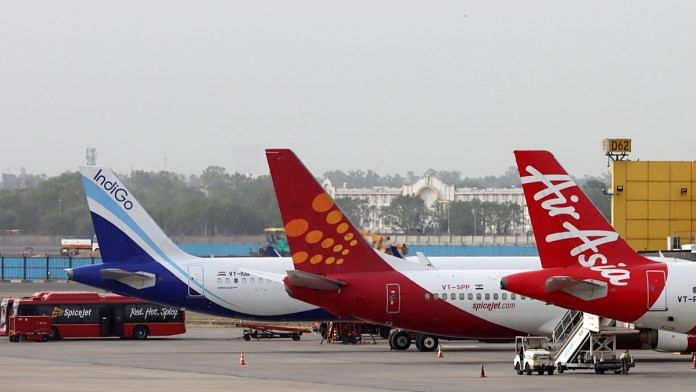New Delhi: Indian airlines were just about recovering from the coronavirus-induced lockdown of 2020 when the second wave hit, setting back all the ground they had covered. According to a written reply to a Rajya Sabha question submitted by Minister of State of Civil Aviation Gen V.K. Singh, airlines in India suffered cumulative losses of Rs 15,086.3 crore in FY 2020-21.
Air India (loss of Rs 4,700 crore) and IndiGo (Rs 5,829.7 crore) were the worst-hit airlines. Vistara (Rs 1,609.7 crore), AirAsia (Rs 1,396.0 crore), and Go Air (Rs 1,333.5 crore) fared slightly better, while data for SpiceJet was not made available because the airline failed to submit the provisional profit/loss statement for FY 2020-21.
In comparison, Indian carriers suffered a loss of Rs 5,497.24 crore in FY 2019-20 and Rs Rs 6,709.43 crore in FY 2018-19. The national carrier, Air India, which is set to be disinvested by year-end, hardly saw any change in the losses in the last three years. In FY 2019-20, it raked up a loss of Rs 4,660.3 crore and Rs 4,685.26 crore in FY 2018-19.
In FY 2019-20, Go Air losses amounted to Rs 481.67 crore while in the fiscal before that, it recorded profits of Rs 72.69 crore. IndiGo was the only scheduled domestic passenger carrier to have made profits in FY 2019-20 — Rs 1,626.06 crore — preceded by a loss of Rs 490.43 crore in FY 2018-19.
Vistara had losses worth Rs 1,563.28 crore in FY 2019-20 and Rs 900.47 crore in FY 2018-19. AirAsia had losses amounting to Rs 813.09 crore in FY 2019-20 and Rs 703.04 crore in FY 2018-19.
Measures introduced for aviation industry
The Rajya Sabha answer also detailed the various steps taken by the Ministry of Civil Aviation to help airlines overcome the impact of the second wave. These include “route rationalisation in the Indian airspace in coordination with the Indian Air Force for efficient airspace management, shorter routes and lower fuel consumption,” reducing the Goods and Services Tax on domestic Maintenance, Repair and Overhaul (MRO) services to 5 per cent from 18 per cent, air bubble arrangement with 28 countries to facilitate international travel and introducing fare-bands.
Benefits amounting to Rs 127.51 crore to SpiceJet and Rs 25.65 crore to Go Air under the Emergency Credit Line Guarantee scheme 3.0 were also extended, according to the written answer shared by Gen V.K. Singh in Rajya Sabha last week.
“The key outcome of these measures has been that despite the pandemic, domestic operations have reached about 50 per cent of pre-Covid levels. Also, the number of freighters have increased from seven to 28,” the government said.
Also read: Indian airports report Rs 7,000 cr loss in FY 21, 63% fall in passenger traffic, report finds



